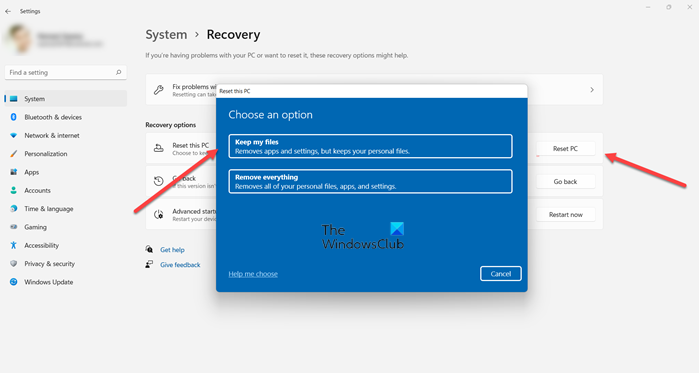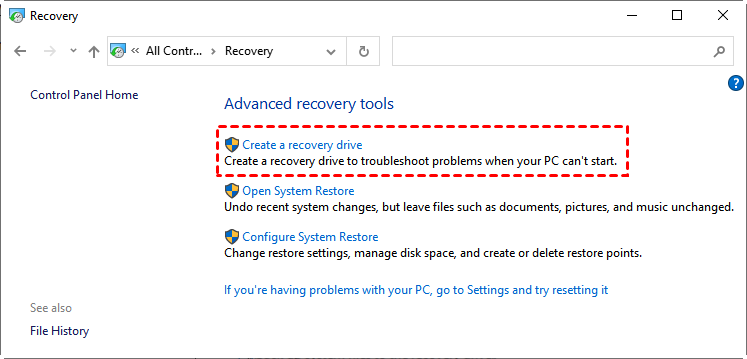

- PERSIST APPLICATIONS THROUGH SYSTEM RECOVERY WINDOWS 10 HOW TO
- PERSIST APPLICATIONS THROUGH SYSTEM RECOVERY WINDOWS 10 UPGRADE
- PERSIST APPLICATIONS THROUGH SYSTEM RECOVERY WINDOWS 10 WINDOWS 10
It enables you to focus on defining outcomes based on business needs instead of maintaining and troubleshooting environments.

JMP is the next-generation desktop and application delivery platform from VMware and is a key component of VMware Horizon®. The VMware Horizon 7 solution includes several components, of which View is the main one. Horizon 7 enables organizations to deliver virtualized or remote desktop services and applications to end users from centralized VMware vSphere servers. VMware Horizon 7 is a family of desktop and application virtualization solutions designed to deliver Windows and Linux virtual desktops and published applications. This section briefly describes VMware Horizon 7 and Microsoft Office 365 in preparation for using them together. What Is VMware Horizon 7 with Microsoft Office 365? Familiarity with VMware vSphere and VMware vCenter Server is assumed, as is familiarity with other technologies, including networking and storage in a virtual environment, Active Directory, identity management, and directory services. This guide is intended for IT administrators who want to expand their use of VMware Horizon 7. This guide is to help you use VMware Horizon 7 to deliver Microsoft Office 365 ProPlus to your end users. This document will refer to them as AppStacks. Note: The terminology has changed in App Volumes 4.0. VMware Dynamic Environment Manager 9.9 and later.Another version of this document will cover Horizon Cloud on Azure. This version of the document covers Horizon 7 On-Premises. For information beyond the scope of this document, see Additional Resources. This article explores the use of Microsoft Office 365 in a VMware Horizon® 7 environment, including tips and best practices that can improve performance and application manageability.


Installing and Configuring Office 365 on Horizon 7 Systems.Enabling Shared Computer Activation on Nonpersistent VDI and RDS.Using the Office 365 ProPlus Configuration XML Editor.Requirements for Using Nonpersistent VDI and RDS with Office 365 ProPlus.Understanding How Shared Computer Activation Works.Configuring Office 365 ProPlus for Horizon 7.What Is VMware Horizon 7 with Microsoft Office 365?.
PERSIST APPLICATIONS THROUGH SYSTEM RECOVERY WINDOWS 10 HOW TO
msi or Windows Update installation on a computer that has a disk size of greater than 128 GB.įor more information about System Restore, see How to Use System Restore in Windows 7, 8, and 10 and Backup and restore in Windows 10.Best Practices for Delivering Microsoft Office 365 in VMware Horizon 7 You can verify this yourself by checking for a restore point after a. Similarly, if the disk size is less than 128 GB, no restore point is created until System Restore is manually enabled. However, on an MSI or Windows Update installation, if the size of the operating system disk is greater than 128 gigabytes (GB), a restore point is automatically created without the user enabling System Restore (as if System Restore were already enabled).
PERSIST APPLICATIONS THROUGH SYSTEM RECOVERY WINDOWS 10 UPGRADE
More informationīy default, System Restore should be disabled after an upgrade regardless of its earlier setting, and all the older Restore Points will be deleted from System Restore. This issue occurs because system restore points don't persist after a Windows upgrade. Querying the System Restore via PowerShell: Restore points after you upgrade to Windows 10: When you try to restore the system to an earlier restore point after the upgrade, you discover that you can't do that.
PERSIST APPLICATIONS THROUGH SYSTEM RECOVERY WINDOWS 10 WINDOWS 10
This article discusses an issue where you can't restore the system to an earlier restore point after an upgrade to Windows 10.Īpplies to: Windows 10 - all editions Original KB number: 3209726 SymptomsĪssume that you have a Windows 7-based system with system restore points set, and the computer is upgraded to Windows 10.


 0 kommentar(er)
0 kommentar(er)
